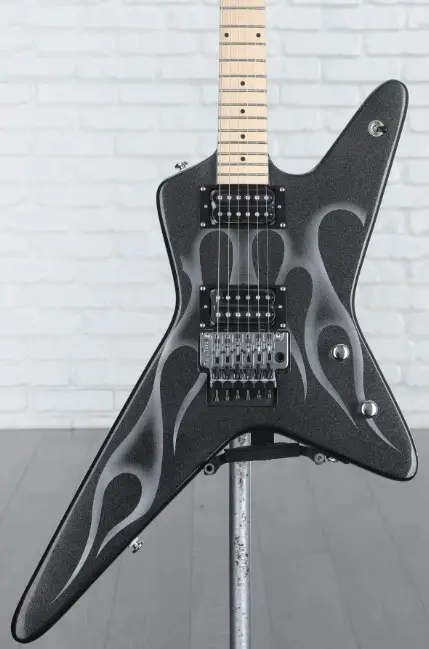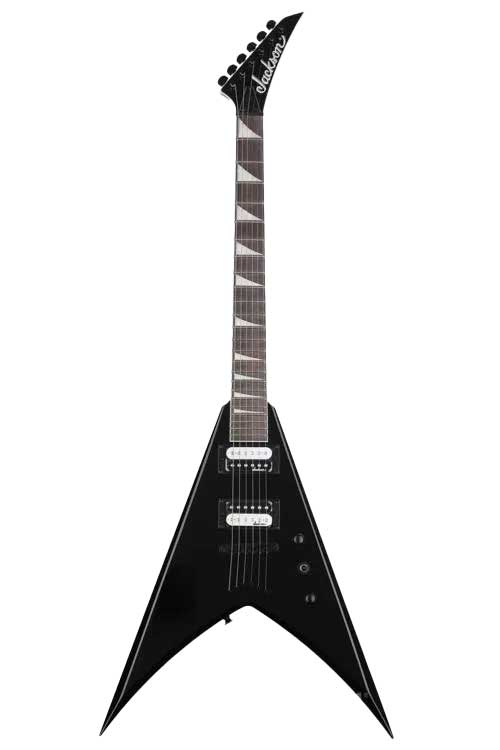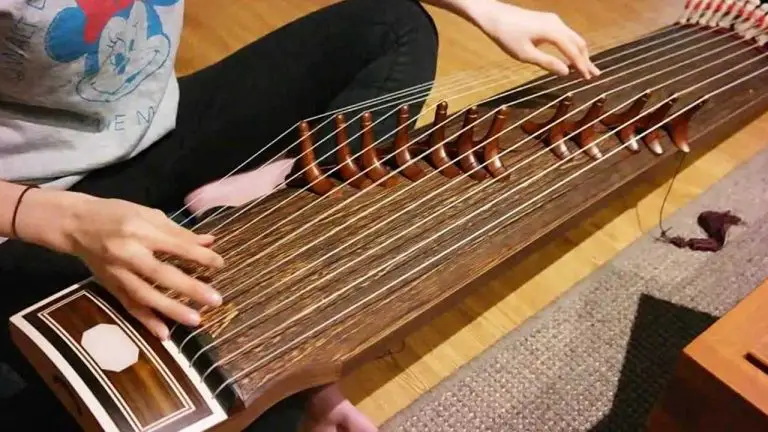Rock Out with Star-Shaped Guitars: Unleash Your Inner Rockstar!
Folkstrings.com is reader-supported. When you buy through links on our site, we may earn a small commission.
If you’re a guitar enthusiast, you may have come across unique and eye-catching star-shaped guitars.
These guitars, as the name suggests, are designed with a star shape, making them stand out from traditional guitar shapes. They are not only visually appealing but also offer great sound quality and playability.
Star-shaped guitars have been around for quite some time, and they have been used by popular musicians in various genres, including rock, metal, and pop. These guitars come in different shapes and sizes, and they are made by various guitar manufacturers, including Jackson, ESP, Daisy Rock, and John Birch.
If you’re looking to buy a star-shaped guitar, there are several factors to consider, such as the guitar’s body material, pickups, and bridge.
Some star-shaped guitars are designed for beginners, while others are meant for professional guitar players.
Table of Contents
History of Star-Shaped Guitars
If you’re a fan of rock music, you’ve likely seen a star-shaped guitar before.
These unique instruments have been popular among musicians for decades, and their history is an interesting one.
In this section, we’ll explore the origins of star-shaped guitars and how they became a staple in rock music.
What are Star-Shaped Guitars Called?

Star-shaped guitars are also commonly referred to as “star guitars” or “explorer guitars.”
These names come from the shape of the guitar’s body, which is typically a variation of the “Explorer” shape.
Some manufacturers, such as Ibanez, have their own names for their star-shaped guitar models, such as the “Destroyer” and “DT” series.
Early Designs
The origins of star-shaped guitars can be traced back to the late 1970s.
Eddie Van Halen is often credited with inventing the first star-shaped guitar, which he created by modifying an Ibanez Destroyer to look like a shark.
However, it was Wayne Charvel who refined the design and created the first Charvel Star in 1979. These early designs were typically made of wood and had a pointy, angular shape that set them apart from traditional guitar designs.
Popularization in Rock Music

Star-shaped guitars gained popularity in the 1980s, particularly in the heavy metal and hard rock genres.
Musicians such as Dave Mustaine of Megadeth and James Hetfield of Metallica were known for playing star-shaped guitars on stage. Ibanez also produced a popular line of star-shaped guitars in the mid-1980s, which were used by musicians such as Steve Vai and Joe Satriani.
Today, star-shaped guitars continue to be popular among rock musicians. While their unique shape may not be for everyone, they offer a distinctive look and sound that sets them apart from other guitar designs.
Design and Construction
Body Shape and Size
Star-shaped guitars have a unique and eye-catching design that stands out from the more traditional guitar shapes.
The body shape of a star guitar is typically based on the Explorer shape, which is a roughly triangular shape with a section of its rear end cut out.
The shape of the star guitar is often more angular and aggressive than other guitar shapes, which makes it a popular choice for rock and metal guitarists.
The size of the body can vary depending on the specific model and manufacturer.
Some star guitars are designed to be larger and heavier, which can give them a more powerful sound.
Others are designed to be more lightweight and compact, which can make them easier to play for extended periods.
Materials and Finishes

The materials used to construct a star guitar can also vary depending on the manufacturer and model.
Some guitars are made from high-quality woods like mahogany or maple, which can give them a rich and warm tone.
Others are made from more affordable materials like basswood or alder, which can still produce a great sound but at a lower cost.
The finish of a star guitar can also be an important consideration for many players. Some guitars have a glossy finish that gives them a sleek and polished look.
Others have a matte finish that can give them a more rugged and worn-in appearance.
The color of the finish can also vary, with some guitars featuring bright and bold colors while others have a more subdued and classic look.
Overall, the design and construction of a star guitar can have a significant impact on its sound, playability, and overall aesthetic appeal.
Whether you’re a beginner or a seasoned pro, a star guitar can be a great choice if you’re looking for a unique and powerful instrument.
Notable Star-Shaped Guitars
If you’re a fan of guitars, you’ve probably seen a star-shaped guitar at some point. These guitars are unique and eye-catching, and they’ve been played by some of the biggest names in music. Here are a few notable star-shaped guitars:
- The John Birch Star Guitar: Made for Gerry Shephard of the Glitter Band in 1972, this guitar was recently revamped in 2008. It’s a classic example of a star-shaped guitar, with a sleek silver finish and a distinctive shape.
- The ESP Rl-600 sig: This guitar is meant for metal and boasts a Floyd Rose, Emg-hz F-h2 passive humbuckers, and jumbo frets so you can fly across the fingerboard when you shred.
- The Charvel Star Nitebob Guitar: This guitar is a classic example of a time and place in the metal guitar universe. It’s a star-shaped guitar that was popular in the 80s, with a distinctive shape and a sleek black finish.
What is the Triangle Shaped Electric Guitar Called?
If you’ve seen a guitar with a triangular shape, you might be wondering what it’s called. This is the Flying V series by Gibson or the King V by Jackson guitars.


The Gibson Flying V has a sharp and distinct appearance with its iconic V-shaped body.
This design was first introduced in 1958, and it still stands out today, giving the guitar a futuristic and unique look. The shape isn’t just for visual appeal –
it also provides excellent access to the upper frets, making it easier to play fast solos or reach those higher notes.
They’re equipped with Gibson’s humbucker pickups, usually a 490R at the neck and a 498T at the bridge, which contributes to their powerful and aggressive tone.
The mahogany body adds warmth and resonance, but you can still achieve a range of tones with the right technique and setup.
Over the years, Gibson has released various models of the Flying V, each with its own unique features, finishes, and hardware options.
The Jackson King V is another guitar with a distinctive V-shaped body, which has been popular among heavy metal and hard rock guitarists since its introduction in the early 1980s.
The King V shares some similarities with the Gibson Flying V, but it also has its own unique features that set it apart and make it a favorite among many players.
One of the standout characteristics of the King V is its sharp, angular design. The body has more aggressive lines compared to the Gibson Flying V, giving it an edgy and modern look that appeals to many guitarists.
Like the Flying V, the King V’s shape allows for easy access to the upper frets, which is especially beneficial for those who like to play solos and shred.
It typically comes equipped with high-output humbucker pickups from brands like EMG or Seymour Duncan, offering a tight and focused sound with plenty of sustain. The neck-through-body construction and choice of tonewoods, like alder or mahogany, also contribute to the King V’s overall resonance and clarity.
What is the Most Famous Guitar Shape?
When it comes to guitar shapes, there are a lot of options to choose from.

However, one shape that stands out as the most famous is undoubtedly the Stratocaster. This guitar was first introduced by Fender in 1954, and it quickly became a favorite of musicians across a wide range of genres.
One of the reasons why the Stratocaster is so popular is its versatility.
This guitar can be used to play everything from blues to rock to country, and it has been used by countless famous musicians over the years.
Some of the most well-known Stratocaster players include Jimi Hendrix, Eric Clapton, and Stevie Ray Vaughan.
Another reason why the Stratocaster is so famous is its distinctive shape.
This guitar features a double-cutaway body with a contoured design that makes it comfortable to play for extended periods of time.
The Stratocaster also has three single-coil pickups that provide a bright, clear sound that is perfect for lead playing and soloing.
The Stratocaster is a guitar that has stood the test of time. Its combination of versatility, comfort, and distinctive design has made it a favorite of musicians for over half a century.
Playing Techniques
If you’re planning to play a star-shaped guitar, you need to know the proper playing techniques to produce the best sound. Here are some tips:
- Use palm muting to create a percussive sound. Rest the edge of your hand on the strings near the bridge while strumming to produce a muted sound. This technique is often used in heavy metal music.
- Experiment with different pick angles. Varying the angle of the pick can produce different tones. Try using a shallower angle for a brighter sound and a steeper angle for a heavier sound.
- Practice alternate picking. This technique involves using a downstroke followed by an upstroke, and is commonly used in fast-paced guitar solos.
- Use vibrato to add expression to your playing. Vibrato involves slightly bending the string back and forth to create a wobbling sound. It can be used to add emotion to sustained notes or to create a unique effect.
Remember, practice makes perfect. Experiment with different techniques and find what works best for you and your playing style.
Conclusion
Choosing the right guitar for you is an important decision, and a star-shaped guitar can be a unique and exciting choice.
Whether you are a beginner or an experienced musician, there are many options to choose from, ranging from affordable beginner models to high-end signature guitars.
When selecting your star-shaped guitar, consider the type of music you want to play and the features that are important to you.
Some models are better suited for heavy metal, while others are more versatile and can handle a range of styles.
Additionally, think about the size and weight of the guitar, as well as the neck shape and fretboard material. These factors can affect your comfort and playability, especially if you plan to play for long periods of time.
Author Profile
-
Daniel Johnstone is an English writer with a love for stringed instruments from around the world.
He shares his love for these instruments through his writing for folkstrings.com, a website dedicated to all things related to folk string music.
Daniel's passion for music started at a young age, and he has since become an accomplished musician, playing guitar, cavaco, and recently, the harp.
His dedication to learning and sharing his knowledge of stringed instruments is evident in his insightful and engaging blog posts. Whether you're a seasoned musician or a beginner, Daniel's writing is sure to inspire and entertain you.
When he's not playing music or writing, you can find Daniel exploring new instruments and seeking out new sounds to share with his readers.
Latest entries
 AutoharpApril 4, 2024What Is the Autoharp Made Of: Exploring Its Materials and Craftsmanship
AutoharpApril 4, 2024What Is the Autoharp Made Of: Exploring Its Materials and Craftsmanship AutoharpApril 4, 2024Is Autoharp Easy to Play? Unveiling the Truth for Beginners
AutoharpApril 4, 2024Is Autoharp Easy to Play? Unveiling the Truth for Beginners AutoharpApril 4, 2024What Is an Autoharp Worth? Your Guide to Pricing and Value
AutoharpApril 4, 2024What Is an Autoharp Worth? Your Guide to Pricing and Value AutoharpApril 4, 2024Are Autoharp and Zither the Same Thing? Unraveling String Instrument Myths
AutoharpApril 4, 2024Are Autoharp and Zither the Same Thing? Unraveling String Instrument Myths
Affiliates:
This post may contain affiliate links that at no additional cost to you, the site may earn a small commission. We only recommend products we would use ourselves and all opinions expressed on this site are our own.
Accuracy Advice:
While we strive to provide up-to-date and accurate information, the content in this article may not reflect the most current research or medical guidelines. We encourage readers to do further research and consult with professionals for more personalized advice.
Our Recommendations:
The products and services mentioned in any of our articles are recommended based on our independent research and personal experience. We are not sponsored by any company. We aim to suggest products and services we believe are of high quality and could be beneficial to our readers.





